Click on images to enlarge
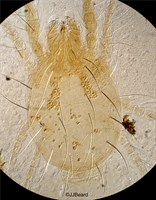
Fig. 1. Oligonychus coffeae adult female (non-type) - dorsal habitus.

Fig. 2. Oligonychus coffeae adult female (non-type) - detail of empodia III.
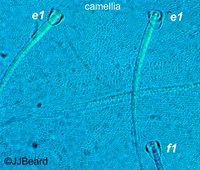
Fig. 3. Oligonychus coffeae adult female (non-type) - detail of shape of lobes on dorsal striae.
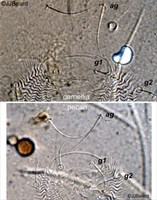
Fig. 4. Oligonychus coffeae adult female (non-type) - detail of the pattern of pregenital striae.
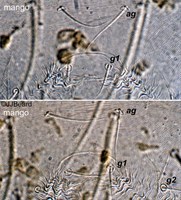
Fig. 5. Oligonychus coffeae adult female (non-type) - detail of the pattern of pregenital striae.
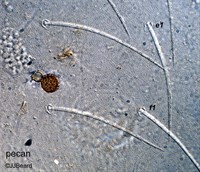
Fig. 6. Oligonychus coffeae adult female (non-type) - detail of the pattern of dorsal striae between setae e1 and f1.
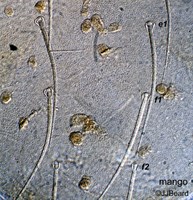
Fig. 7. Oligonychus coffeae adult female (non-type) - detail of the pattern of dorsal striae between setae e1 and f1.
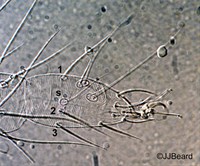
Fig. 8. Oligonychus coffeae adult female (non-type) - detail of tarsus I (indicating number of proximal setae).
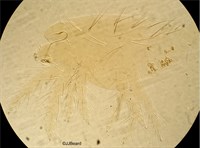
Fig. 9. Oligonychus coffeae adult male (non-type) - lateral habitus.
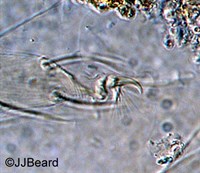
Fig. 10. Oligonychus coffeae adult male (non-type) - detail of empodium.
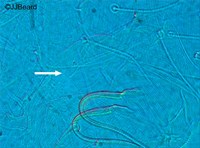
Fig. 11. Oligonychus coffeae adult male (non-type) - detail of peritreme (arrow indicates the tip).
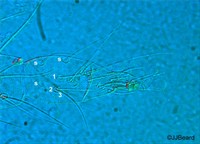
Fig. 12. Oligonychus coffeae adult male (non-type) - detail of tarsus I (indicating the number of proximal setae).
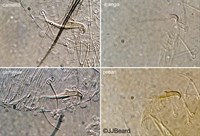
Fig. 13. Oligonychus coffeae adult male (non-type) - detail of aedeagus.
Material examined
non-types
Taxonomy
Subfamily Tetranychinae
Tribe Tetranychini
Distribution
+Australia, Bangladesh, Brazil, Burma, CIS, China, Colombia, Congo, Costa Rica, Ecuador, Ethiopia, Fiji, French Polynesia, Hainan Island, Hawaii, India, Indonesia, Kenya, Madagascar, Malawi, Malaysia, Mauritis, Mozambique, Nepal, New Caledonia, Nigeria, Paraguay, Philippines, Reunion, Solomon Islands, South Africa, *Sri Lanka, Taiwan, Tanzania, Thailand, Tonga, USA, Uganda, Vanuatu, Vietnam, Wallis & Futuna, Western Samoa, Zaire, Zimbabwe
Taxonomy Changes
Acarus coffeae Nietner 1861
Oligonychus coffeae (Nietner) Pritchard & Baker 1955
Tetranychus bioculatus Wood-Mason 1884
Paratetranychus bioculatus (Wood-Mason) Baker & Pritchard 1953, synonymy Pritchard & Baker 1955
Oligonychus merwei Tucker 1926, synonymy Pritchard & Baker 1955
Diagnosis
Female (Fig. 1)
- empodia I-IV strongly curved, sickle shaped claw, as long as proximoventral hairs (Fig. 2)
- lobes on dorsal striae present or absent in literature; Australian material variable when present (Figs 3, 6, 7)
- Baker & Tuttle (1994): lobes on dorsal striae broader than tall
- pregenital striae usually longitudinal, but sometimes with patches of irregular to oblique striae (Figs 4, 5)
- most dorsal striae transverse, except sometimes irregular longitudinal and oblique between opisthosomal setae e1-e1 and/or setae f1-f1 (Figs 6, 7)
- shape of peritreme varies with description (Fig. 11):
- peritreme ending in simple bulb with little or no expansion (Aust. material from pecan; Gupta & Gupta 1994; Meyer 1987)
- peritreme recurved distally = distal hook (Tseng 1990)
- palp with spinneret as long as wide
- number of proximal setae on tarsus I varies with description (Fig. 8):
- tarsus I with sockets of three-four tactile setae and one solenidion proximal to the socket of the proximal duplex seta (when three tactile setae proximal, then one tactile overlapping the prox. dupl. seta)
- tarsus I with the sockets of three tactile setae and one solenidion proximal to the socket of the proximal duplex seta (Aust. material from pecan, mango; Baker & Pritchard 1960)
- number of proximal setae on tarsus II varies with description:
- tarsus II with the sockets of three tactile setae and one solenidion proximal to the socket of the proximal duplex seta (+ one tactile setae adjacent to duplex seta) (Aust. material from pecan)
- tarsus II with the sockets of four tactile setae and one solendion proximal to the socket of the proximal duplex seta
- tarsal segments short
- tibiae 8(1+0), 5, 5, 5
- dark red
Male (Fig. 9)
- empodia I-IV with curved claw as in female (Fig. 10)
- dorsal striae with lobes broader than tall (Baker & Tuttle 1994)
- peritreme ending in simple bulb with little or no expansion (Fig. 11)
- description of spinneret of palp varies with description:
- tiny (Gupta & Gupta 1994)
- small, but twice as long as wide (Aust. material from pecan; Tseng 1990)
- number of proximal setae on tarsus I varies with description (Fig. 12):
- tarsus I with the sockets of three tactile and two-three solenidia proximal to the socket of the proximal duplex seta (+ when three solenidia proximal, then one solendion adjacent to prox. dup. set.) (Aust. material from pecan)
- tarsus I with the sockets of three tactile and three solenidia proximal to the socket of the proximal duplex seta (Pritchard & Baker 1955; Baker & Pritchard 1960)
- number of proximal setae on tarsus II varies with description:
- tarsus II with the sockets of three tactile setae and one solenidion proximal to the socket of the duplex seta (+ one tactile seta adjacent to duplex seta) (Aust. material from pecan)
- tarsus II with the sockets of three-four tactile setae and one solenidion proximal to the socket of the duplex seta (P&B 1955)
- tibiae I-II - 10(3+0), 5 (Gupta & Gupta 1994)
- tibiae I - 11(4+0) (Tseng 1990);
- aedeagus ventrally directed, bends ventrally at right angle to shaft, gradually narrows to slender truncate tip (Fig. 13)
Hosts
> 100 recorded species of host plants, including: Abelmoschus esulentus, A. ficulneus (Malvaceae), Acacia confusa, A. cyanophylla, A. simplicifolia (Mimosaceae), Annona reticulata, A. squamosa (Annonaceae), Callistemon citrinus (Myrtaceae), Camellia sinensis (Theaceae), Citrus sp. (Rutaceae), *Coffea arabica, C. canephora (Rubiaceae), Combretum erythrophyllum, C. paniculatum, C. quadrangulare (Combretaceae), Derris elliptica, D. robusta (Fabaceae), Diospyros pilosanthera (Ebenaceae), Eucalyptus globulus, E. gomphocephala, E. robusta , Eugenia cumingii, Eu. jambolana, Eu. javanica (Myrtaceae), Euphorbia longana (Euphorbiaceae), Hakea salinga (Proteaceae), Hevea brasiliensis (Euphorbiaceae), Litchi chinensis (Sapindaceae), Litsea glutinosa, L. lancifolia, L. umbellata (Lauraceae), Mangifera indica (Anacardiaceae), Manihot esculenta (Euphorbiaceae), Melaleuca quinquenervia (Myrtaceae), Morus sp. (Moraceae), Nerium indicum (Apocynaceae), Passiflora edulis (Passifloraceae), Persea americana (Lauraceae), Physalis micrantha (Fabaceae), Plumeria alba (Apocynaceae), Protea compacta, P. eximia, P. latifolia (Proteaceae), Prunus avium, P. persica (Rosaceae), Psidium guajava (Myrtaceae), Quercus robur (Fagaceae), Rosa sp. (Rosaceae), Senecio angulatus (Asteraceae), Solanum nigrum (Solanaceae), Syzygium cordatum, S. jambos (Myrtaceae), Trichilia dregeana, T. emetica (Meliaceae), Vitis vinifera (Vitaceae)
Similar Taxa
Species recorded in Australia:
- Oligonychus ilicis (McGregor, 1917)
- Oligonychus mangiferus (Rahman & Sapra, 1940)
- Oligonychus punicae (Hirst, 1926)
- Oligonychus ununguis (Jacobi, 1905)
Species not yet recorded in Australia:
- Oligonychus vitis Zaher & Shehata
Biology
Oligonychus coffeae is considered to be the most serious of all tea pests in Sri Lanka, Kenya, Mozambique and India, where it causes a copper-bronze appearance to the leaves. The damage may reach 5-11% crop loss during April-June.
In Australia, O. coffeae was first recorded in Brisbane on Quisqualis indica (Pritchard & Baker 1955), then later at Woombye near Nambour on pecan nuts and azalea in 1965 and avocado in 1974 (Rand & Schicha 1981).
On avocado the mites are found mainly on the upper surfaces where they cause severe bronzing and heavy leaf fall. Old shed skins and eggs shells are usually clearly visible along the main vien as white dust or spots.
References
Gupta, S.K. and Gupta, Y.N. (1994) A taxonomic review of Indian Tetranychidae (Acari: Prostigmata) with descriptions of new species, re-descriptions of known species and keys to genera and species. Memoirs of the Zoological Survey of India 18: 1-196
Gutierrez, J. and Schicha, E. (1984) Phytoseiidae and Tetranychoidea in Fiji and other South Pacific islands (Acari). International Journal of Entomology 26: 386-388
+Gutierrez, J. and Schicha, E. (1985) Notes on the occurrence of Oligonychus milleri (McGregor) and O. coffeae (Nietner) (Acari: Tetranychidae) in Australia. Australian Entomological Magazine 12: 69-70
Jeppson, L.R., Keifer, H.H. and Baker, E.W. (1975) Mites injurious to Economic Plants. Berkely: University of Californai Press.
Meyer, M.K.P. Smith (1987) African Tetranychidae (Acari: Prostigmata) with reference to the world genera. Entomology Memoirs, Department of Agriculture and Water Supply, Republic of South Africa 69: 1-175
*Nietner, J. (1861) Observations on the enemies of the coffee tree in Ceylon. Ceylon, 31pp.
Pritchard, A.E. and Baker, E.W. (1955) A revision of the spider mite family Tetranychidae. Pacific Coast Entomology Society Memoirs 2: 1-472
Rand, J. and Schicha, E. (1981) The tea red spider mite, Oligonychus coffeae (Nietner) (Acari: Tetranychidae) as an avocado pest in Australia. General and Applied Entomology 13: 9-10
Rimando, L. (1962) The tetranychoid mites of the Philippines. Univ. Philipp. coll. Agricl. Techn. Bull. 11: 1-52
Tseng, Y. (1994) A monograph of the mite family Tetranychidae (Acarina: Trombidiformes) from Taiwan. Taiwan Museum Special Publication Series Number 9, Taipei, Replublic of China: 1-226
Tucker, R.W.E. (1926) Some South African mites, mainly Tetranychidae and Eriophyidae. S. Afr. Dep. Agric. Div. Entomol. Mem. 5: 1-15
Wood-Mason, J. (1884) Report on the tea-mite and tea-bug of Assam. London: 20pp.
Notes
See Notes for O. punicae for a discussion on this species-group.
Copyright © 2018. All rights reserved.